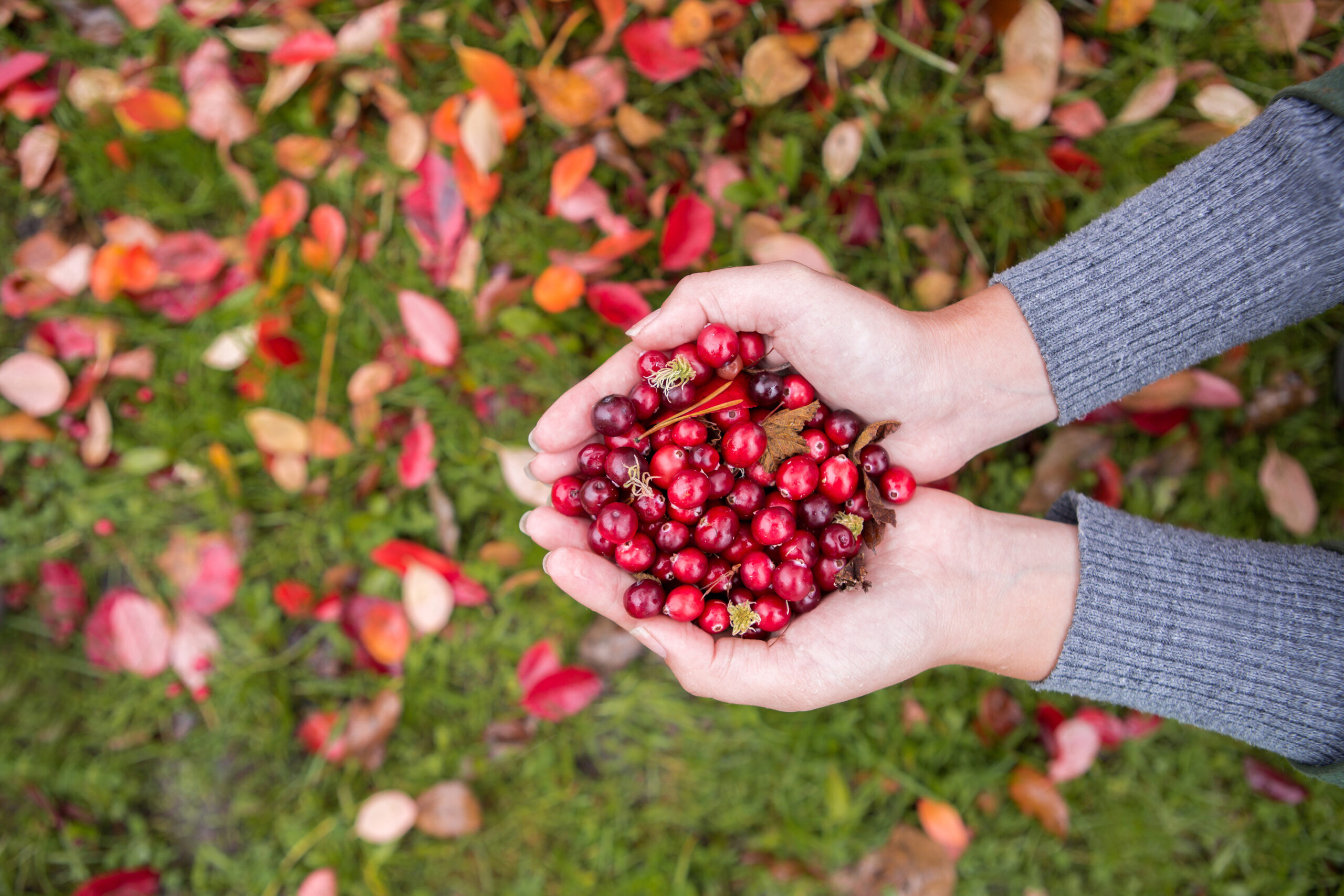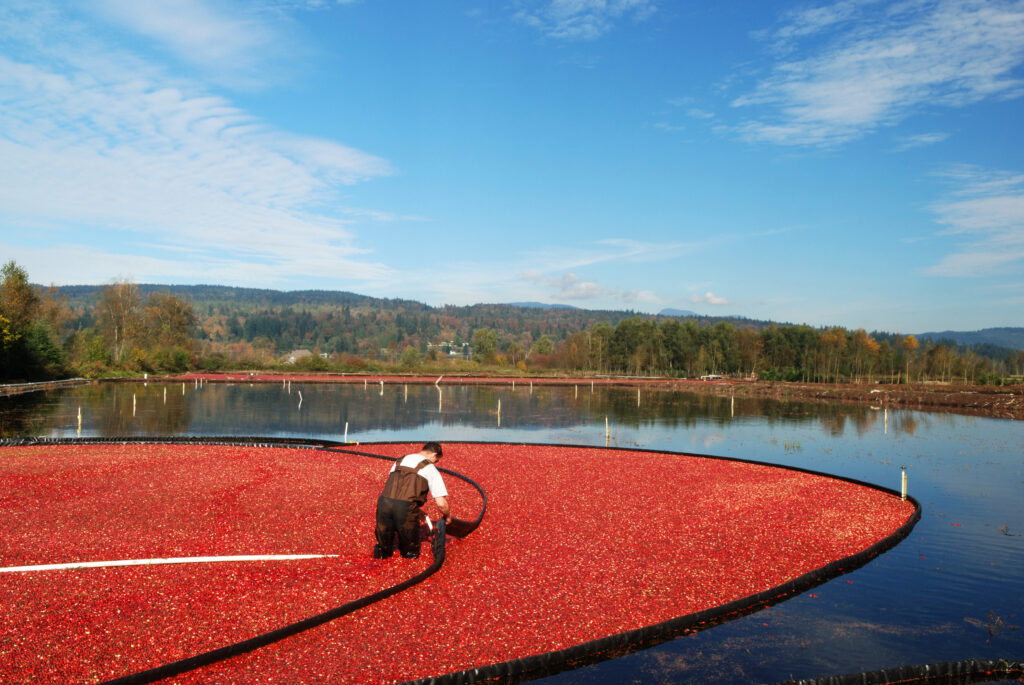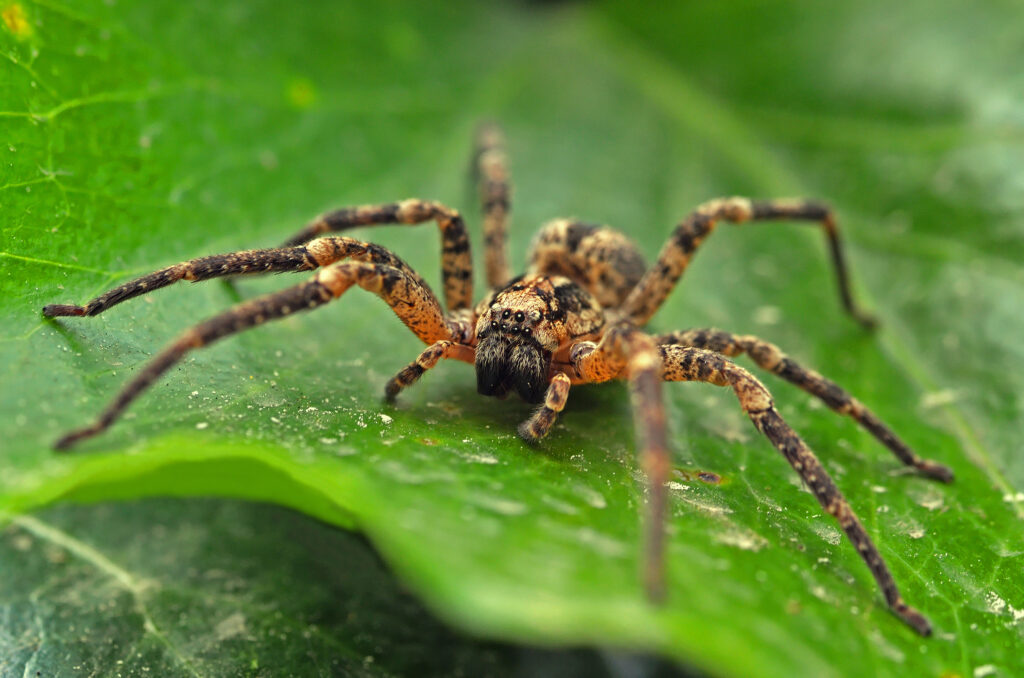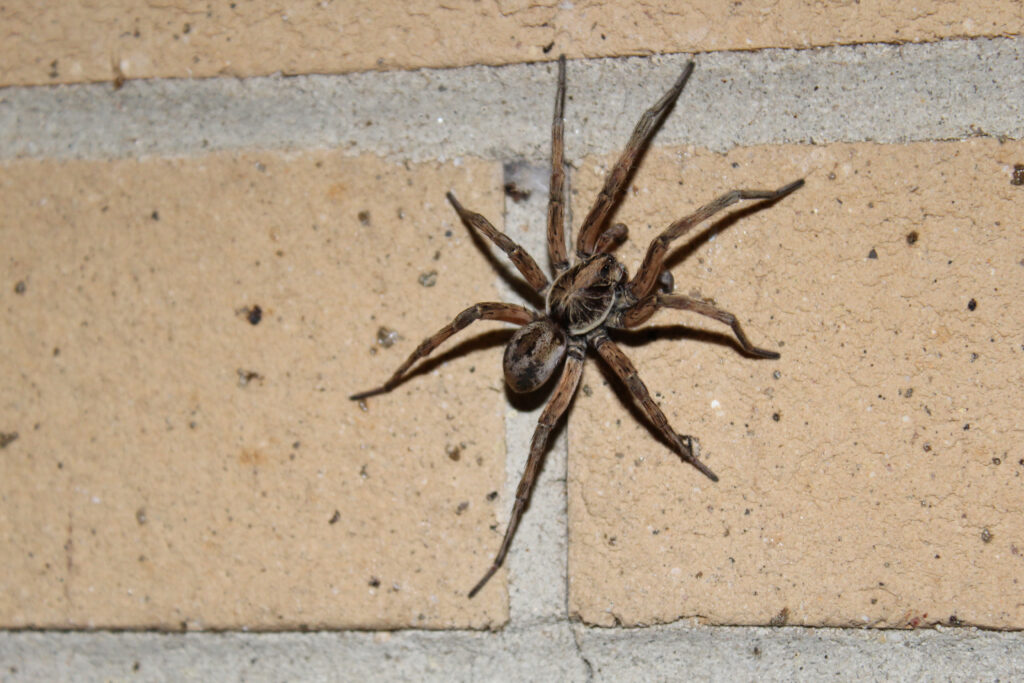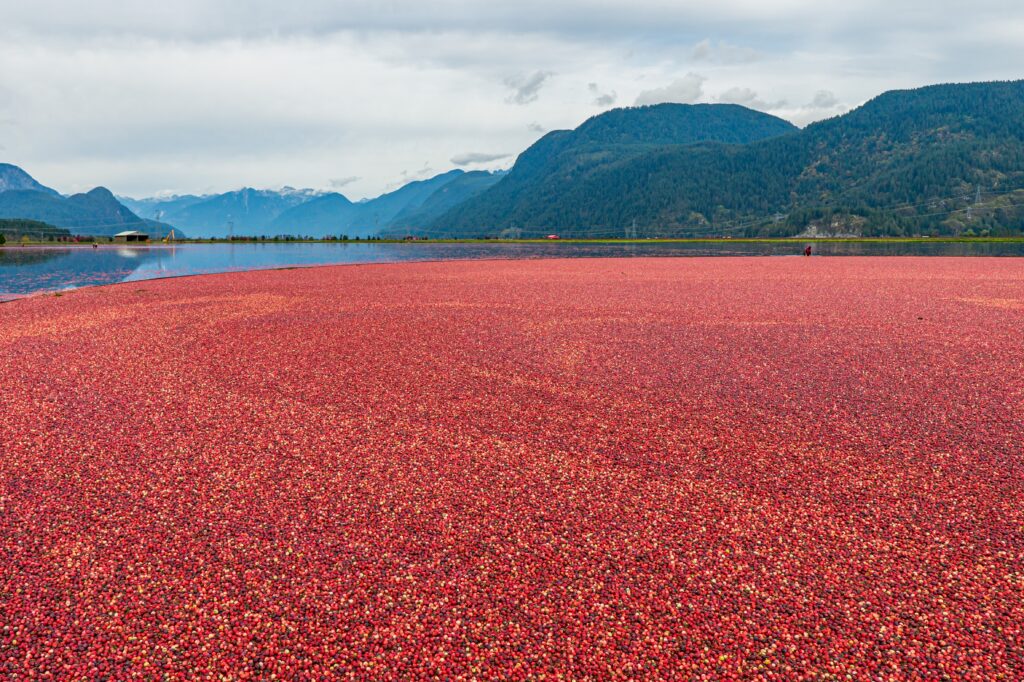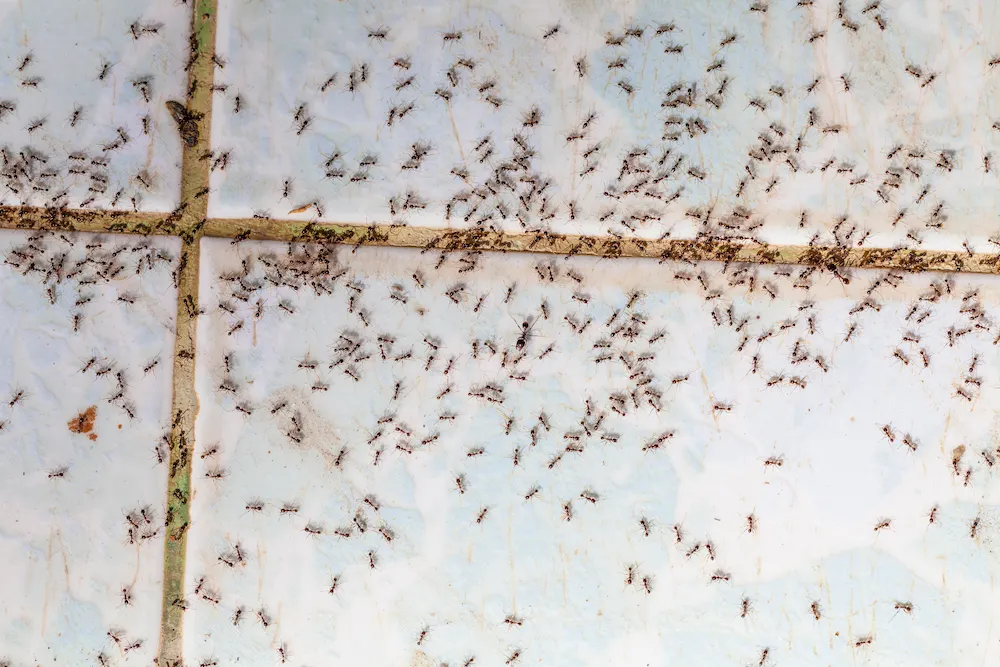When we think of wolf spiders, plenty of words come to mind: scary, nightmarish, weirdly furry. But some people sing the praises of wolf spiders and their carnivorous diet that helps to control the pest population. A certain area of the crop industry uses this to their advantage by introducing wolf spiders to the fields in the hopes that the spiders will protect the crop yield from destructive insects. The valuable crop in question? Cranberries, of course!
Cranberry sauce — possibly the most polarizing dish on the Thanksgiving table — might not exist without the help of wolf spiders. The more insects that are allowed to roam the cranberry bogs, the fewer cranberries left in the crop yield. This whole idea still raises the question: why are wolf spiders so important to the cranberry industry? Let’s explore the main reasons why these creepy arachnids are actually great friends with the tart berries.
Tales From the Pacific Northwest Cranberry Bogs
Washington and Oregon are two important states for cranberry manufacturing, with Oregon’s cranberry yield making up about 8% of the cranberries grown in the U.S.! Millions of pounds of cranberries are grown in the country, mainly in the areas with marshlands and salty air. Cranberry vines are planted in the soil and stay dry most of the year until “wet harvest” begins. This is when the bogs are flooded during harvest season to bring the cranberries to the top for collecting. The wet harvest produces about 90% of the final cranberries, and these are the berries that are processed, dried, and converted into sauces.
Some cranberries are collected in the “dry harvest” process, where a harvester bags the berries straight off the vines. These cranberries are sold fresh. Since cranberries are perennials, they can grow over 20 years if the plants are healthy. It takes about 3 years to produce a full crop, with the harvest season running from August through November. The number of processed cranberries will dwindle if pests run rampant in these bogs, which is where wolf spiders come in.
Spiders As Pest Control?
Spiders are often praised as a great natural form of pest control, especially in residential areas where house spiders lurk in the dusty corners of the rooms. Wolf spiders are one of the best at this task, thanks to their hunting abilities and quick speeds. They’re intentionally kept in cranberry bogs because they have proven time and again that they keep pests away from the cranberries. These spiders are one of the preferred methods of pest control here since they’re both affordable and sustainable.
Wolf spiders fall under the umbrella term of “bog spiders,” which just refers to hunting spiders that live in the wetlands. These arachnids are usually not dangerous to humans and therefore aren’t terrible to have in the cranberry bog. The spiders just wait for their prey in the water, stealthily moving around the sand and standing water. The pests most commonly used as spider chow include cutworms, fruit worms, and weevils.
Pest control is essential for cranberry farms — really, any crop fields — because the crop yield is easily ruined by a swarm of hungry pests. Thankfully, wolf spiders have an insatiable appetite for hungry pests that would otherwise ruin a cranberry harvest.
The Big Bad Wolf (Spider)
Wolf spiders may be great friends with cranberry farmers, though they are not the prettiest spiders of the bunch (but what ones are?). They are brown-colored with dark stripes, and have 8 eyes arranged into 3 rows. Wolf spiders don’t live in webs like other spiders, as they prefer to hide under rocks and logs in between running after their meals. These furry arachnids are fearsome hunters in the pest kingdom, chasing down their prey until they capture the helpless insect with their strong legs. Once wolf spiders catch their prey, they inject their venom into the pest and eat it immediately.
In cranberry fields, wolf spiders start their journey by being placed on the vines. The farmers do this in hopes of prompting the spiders to chow down on any hungry pests living on the vines. Once the bog is flooded for wet harvest, wolf spiders frantically crawl on top of the floating cranberries to stay dry. They can swim — which is a horrifying mental image to have — but wolf spiders prefer to stay dry in between their swim times. In fact, anyone who’s interviewed for a job on a cranberry farm is asked about their feelings on spiders. The people who wade into the bog are the tallest things in the water and become a climbing wall for the desperate wolf spiders!
The Benefits of Wolf Spiders
So, we know that wolf spiders are beneficial pests and will thrive in a cranberry bog. Cranberry farmers clearly seem to have a mutual partnership with these spiders, and the production of cranberry-centered products isn’t slowing down anytime soon. Whoever first thought to introduce wolf spiders to the cranberry bogs was really on to something!
But why would they choose wolf spiders over other carnivorous spiders? Well, for starters:
- They love living near water and humidity
- They have plenty of prey to choose from (insects, arthropods, aquatic critters)
- They can use the vegetation as shelter during the day
- They are free to hunt at nighttime
- They benefit the overall plant health and crop yield
- They regulate the local ecosystem
- They stabilize the insect population and prevent infestation
Wolf spiders are a surprisingly essential component to cranberry bogs, and we can’t thank cranberry farmers enough for willingly wading into spider-infested water. But as helpful as wolf spiders are to cranberry bogs, they are still not a welcomed presence in our homes…
Don’t Let Your Home Become A Spider-Filled Haven
Our homes look nothing like the aforementioned cranberry bogs — unless you enjoy living in a fruit-dense wetland, in which case we respect your choice. Nevertheless, spiders constantly invade our homes and businesses in search of small insects to eat. Half the battle with treating spiders is to remove their food sources, and there is no one better suited for this task than Pointe Pest Control. Our licensed technicians uses informed inspections and targeted treatments to solve each pest issue. We look forward to protecting your home and family from these creepy-crawlies, so contact us to learn more about our efficient services!
Citations
Beaven, K.A. (2016, October 18). Tales from the bog: Inside a New England cranberry harvest. Oyster. Available at https://www.oyster.com/articles/tales-from-the-bog-inside-a-new-england-cranberry-harvest/ (Accessed on April 1, 2024).
Bet you didn’t know cranberry bogs are filled with wolf spiders. (2023, March 10). Animals & hope. Retrieved March 27, 2024, from https://animalsandhope.com/bet-you-didnt-know-cranberry-bogs-are-filled-with-wolf-spiders/
Cranberries. (n.d.). Oregon Agriculture in the Classroom Foundation. Retrieved March 27, 2024, from https://oregonaitc.org/resources/oregon-resources/oregon-grown-commodities/cranberries/
J. (2023, September 20). Bog spiders will make you rethink your love of cranberries. Indie88 FM. Available at https://indie88.com/bog-spiders/ (Accessed on April 1, 2024).
Szalay, J. (2022, March 7). Wolf spiders: Behavior, bites and other facts. LiveScience. Available at https://www.livescience.com/41467-wolf-spider.html (Accessed on April 1, 2024).
Wolf spider. (n.d.). Chesapeake Bay Program. Retrieved April 1, 2024, from https://www.chesapeakebay.net/discover/field-guide/entry/wolf-spider

